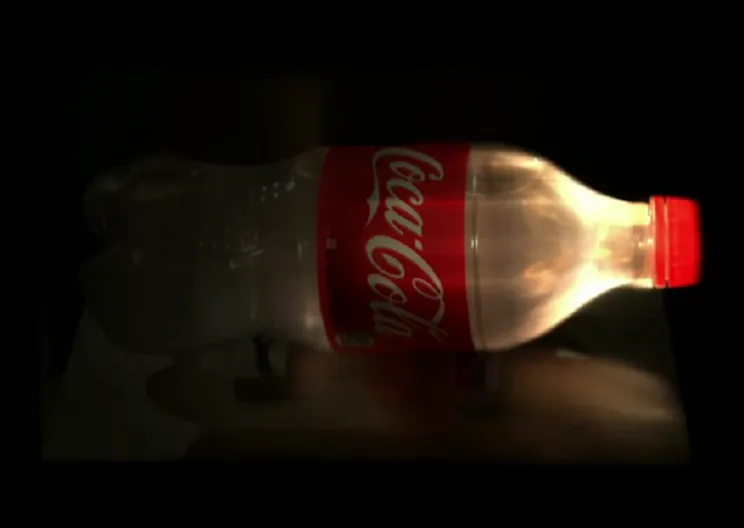Photons Moving in Slow-motion at 1 Trillion Frames per Second
Oct 24, 2019 11:57 AM ET

The camera is extraordinarily unique in that it can only capture thin streaks of images resulting in a two-dimensional picture. The camera aperture is incredibly narrow, only allowing a thin beam of photons to enter the camera. The photons are then converted into electrons just before being directed at an angle perpendicular to the slit. The rapidly changing electric field deflect electrons at varying degrees with late arriving ones being deflected more than the corresponding early arrival ones. Using this method, a frame rate of one trillion frames per second can be achieved.
Based on this principle, only a two-dimensional image is rendered. However, by making use of rotating mirrors, a 3-D image can be built up for instances where a motion is repeatable. To build the image of the bottle, the camera must take pictures over and over to an accuracy extending into the picoseconds (1x10−12 s) while simultaneously re-positioning the streak camera in order to construct a 3D image.
Over the time frame of just one nanosecond, the light passes over the bottle and hundreds of thousands of data sets are collected. A computer algorithm organizes the hundreds of gigabytes collected and stitches them into a singular frame. However, the camera is an incredibly inefficient video camera as it can only render three-dimensional objects in instances where the experiment can be repeated precisely over and over.
Nonetheless, other engineers are currently already implementing the streak camera in different configurations to attain other impressive results. One such team is using the technique to see people around corners. A laser sends out a beam of light which is then recorded by the streak camera. The beam reflects and propagates through the room until it is absorbed or collected by the camera. By analyzing the specific time and angle of return across the photons sent out, it can be determined what remains around a corner.
In the medical industry, the camera could also be utilized as a super-accurate device similar in function to an ultrasound machine where light could replace the sound. While the camera is currently being used for (albeit incredible) scientific experiments, real-world applications of the device could become quite useful in the near future.
Also read
- CNNP Optoelectronics brings utility-scale perovskite modules out of the lab
- Low-Temperature Sequential Deposition Lifts Inverted Perovskite Solar Cells Efficiency Record
- Self-Assembling Molecule Breakthrough Brings Commercial Perovskite Solar Closer to Market
- Camphor Additives Boost Perovskite Solar Cell Efficiency
- NUS Sets Record With 26.4% Perovskite-Organic Solar Cell
